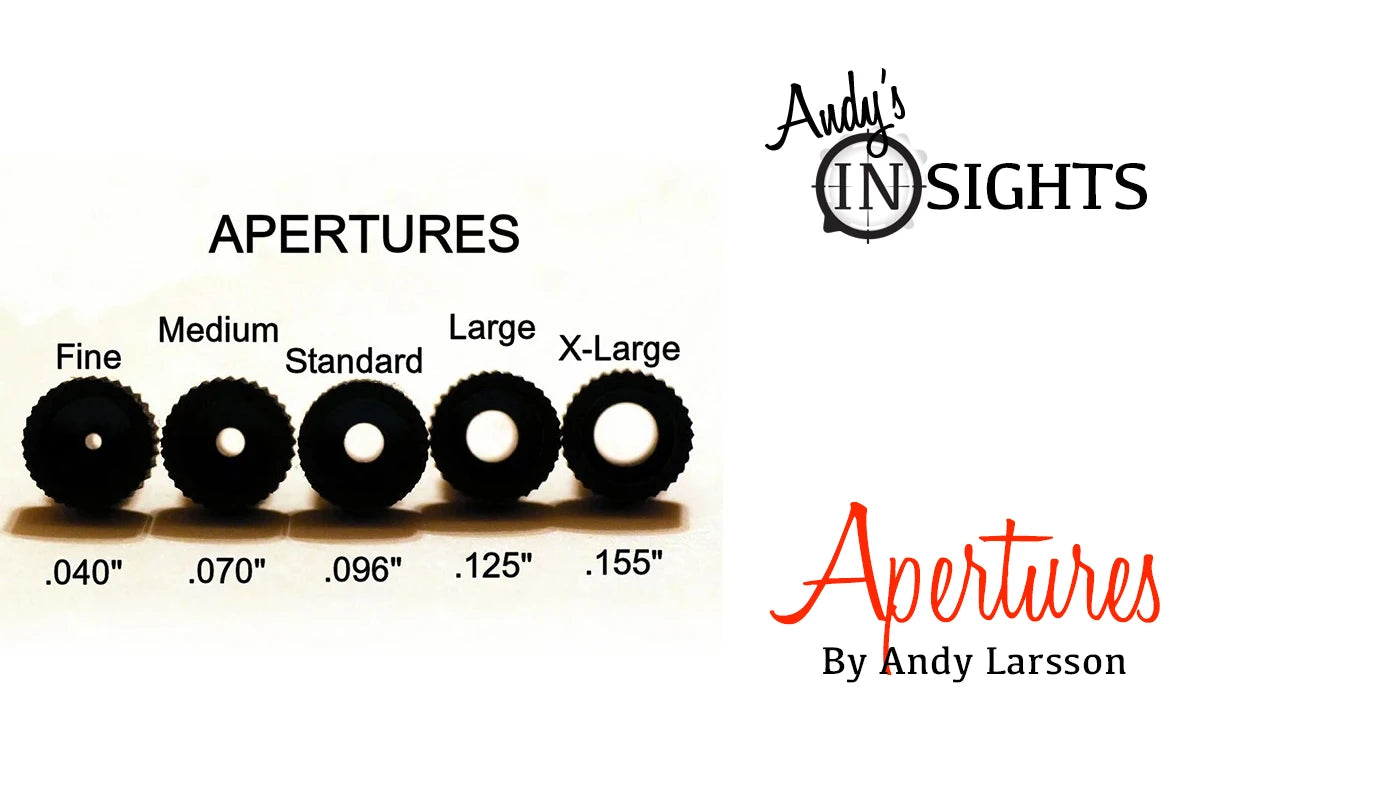
Apertures
A quick word about why aperture sights are superior to other sighting systems.
With an aperture sight the shooter focuses on only the front sight and its alignment on the target. No need to “see” the rear sight. The shooters eye will automatically center the front sight in the round hole. Anything that draws attention to the aperture/hole/rear sight will detract from that magical alignment and require more work to achieve a proper sight picture. Fiber Optics, Brass Rings, Crosshairs, etc. all interfere with the human eye's natural ability to instantly center the front sight in the circle.
Apertures also perform a "Sharpening" function for focus and increased depth of field. This is why they are called the "magic sight for old eyes".
With a smaller aperture, the front sight and target are going to be crisper. With a larger aperture the eye will still automatically center the front but may not be quite as sharp.
No worries, that front sight is still there even if it is slightly fuzzy. Go with it. Think about it... What do all NRA Bullseye, International and Olympic competition shooters use? Precision machined steel apertures with crisp round holes.
Skinner Sights Apertures are precision machined from solid steel barstock.
No plastic, no aluminum, just rugged, precision, crisp steel.
Most Skinner Sights ship with a .096" (Standard) installed.
This is a good all-around aperture size for average conditions.
We recommend the .040 (fine) for target shooting in good light and the .125 (large) or .155 (X-Large) for dim light hunting. Remember, you can always remove the aperture completely for a .200" "Ghost Ring" effect. This is useful in very dim light and for up close encounters with dangerous game.
You can also order several different size apertures and use them interchangeably as light conditions require.

4 comments
Hello Rick,
You are correct, removing the factory “Buckhorn” or notch rear sight will not only look better, it will also be out of the line of sight where it could interfere with the sight picture and how the eye automatically centers the front sight in the rear sight without conscious alignment. We have a dovetail slot blank to replace that sight so it has a finished look and protection from the sharp edges.
Hope that helps!
I just mounted one of your fine sights on my Winchester AE Trapper mod. Even though It coaxials perfectly with the original rear sight, it sounds like it would be advantageous to remove it in order to get the full potential of the aperture. Is this correct? Could using the factory rear sight coaxialed with the aperture be of any use in adjusting the new sight or should I just go ahead and drift it out of there? I’m thinking the rifle will look better without the factory sight now that it sports a Skinner. Thanks for all you do. RP
Hello Bry,
Depends on the thread size of course. I believe the 55R used a 7/32 X 40 thread which is essentially the same as our 10 – 40 threaded apertures. I’ve used ours successfully with many of the Lyman and Redfield sights.
Hope that helps!
Will these thread into an old Lyman 55R peep sight?